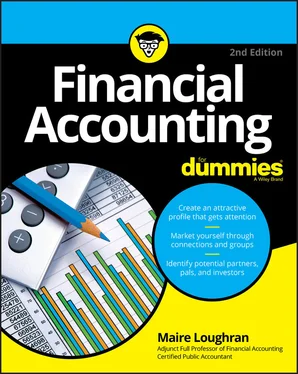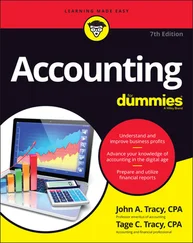210 214
211 215
212 216
213 217
214 218
215 219
216 220
217 221
218 222
219 223
220 224
221 225
222 226
223 227
224 228
225 229
226 230
227 231
228 232
229 233
230 235
231 236
232 237
233 238
234 239
235 240
236 241
237 242
238 243
239 244
240 245
241 246
242 247
243 248
244 249
245 250
246 251
247 252
248 253
249 254
250 255
251 256
252 257
253 258
254 259
255 260
256 261
257 262
258 263
259 264
260 265
261 266
262 267
263 268
264 269
265 270
266 271
267 272
268 273
269 274
270 275
271 276
272 277
273 278
274 279
275 280
276 281
277 282
278 283
279 284
280 285
281 286
282 287
283 288
284 289
285 290
286 291
287 292
288 293
289 294
290 295
291 296
292 297
293 298
294 299
295 300
296 301
297 302
298 303
299 304
300 305
301 306
302 307
303 309
304 310
305 311
306 312
307 313
308 314
309 315
310 316
311 317
312 318
313 319
314 320
315 321
316 323
317 324
318 325
319 326
320 327
321 328
322 329
323 330
324 331
325 332
326 333
327 334
328 335
329 336
330 337
331 338
332 339
333 340
334 341
335 342
336 343
337 344
338 345
339 346
340 347
341 348
342 349
343 350
344 351
345 352
346 353
347 354
348 355
349 356
350 357
351 358
352 359
353 361
354 362
Accounting is known as the language of business because it communicates financial and economic facts about a business to all sorts of interested parties — both internal (employees of the company) and external (people not employed by the company in question). External users include investors, creditors, banks, and regulatory agencies such as the Internal Revenue Service and the U.S. Securities and Exchange Commission.
Zeroing in on the external users of accounting information, this book is about financial accounting . Financial accounting serves the needs of external users by providing them with understandable, materially correct financial statements. There are three financial statements: the income statement, balance sheet, and statement of cash flows. This book is a step-by-step guide on how to prepare all three.
You also find out the purposes of the financial statements:
To report on the financial position of the company — what types of assets the company owns and what types of liabilities it owes.
To show how well the company performs over a period of time, which is referred to as an accounting period. You measure performance by seeing whether the company made or lost money during the accounting period.
A lot of first-time accounting students tell me that they are afraid they won’t do well in their financial accounting class because they haven’t done well in math classes they’ve taken in the past. Forgot about the math — that’s why you have a computer and a calculator! Financial accounting is less about adding and subtracting than using logic-based skills. Added to the mix is the importance of gaining a working understanding of the standards set in place by authoritative accounting bodies.
After years spent in the classroom as both a professor and student, I realize that many accounting textbooks are, well, boring. My purpose in writing this book is to breathe some life into the subject of financial accounting and make it more understandable.
This book, like all For Dummies books, is written so that each chapter stands on its own. I always assume that whatever chapter you’re reading is the first one you’ve tackled in the book. Therefore, you can understand the concepts I explain in each chapter regardless of whether it’s your first chapter or your last.
However, certain terms and concepts pertain to more than one subject in this book. To avoid writing the same explanations over and over, whenever I reference a financial accounting term, method, or other type of fact that I fully explain in another chapter, I give you a brief overview and direct you to the spot where you can get more information. For example, I may suggest that you “see Chapter 11” (which, by the way, discusses the statement of cash flows).
Also, in this book I break financial accounting down to its lowest common denominator. I avoid using jargon that only accounting majors with several accounting classes already under their belts will understand. Please keep in mind that the list of financial accounting topics and methods I present in this book isn’t all-inclusive. I simply can’t cover every possible nuance and twist related to preparing financial accounting data and statements. This book is meant to illuminate the rather dry presentation of topics given in all the financial accounting textbooks from which I’ve taught, providing a perfect companion to the financial accounting textbook your professor is using.
Furthermore, I briefly discuss the Sarbanes-Oxley Act of 2002 (SOX) and the watchdog over the audits of publicly traded companies, the Public Company Accounting Oversight Board (PCAOB). If you have the time, I recommend reading Sarbanes-Oxley For Dummies by Jill Gilbert Welytok, JD, CPA (published by Wiley). This handbook walks you through the new and revised SOX laws.
I assume you don’t have more than a rudimentary knowledge of accounting, and I’m guessing you’re one of the following people:
A college financial accounting student who just isn’t getting it by reading (and rereading) the assigned textbook. (I’ve seen that deer-in-the-headlights look many times in my classroom.)
A non-accounting student currently enrolled in either business or liberal arts who’s considering changing his major to accounting.
A business owner (particularly someone operating a small business with gross receipts of under $1 million) who wants to attempt preparing her own financial statements or just wants to have a better understanding about the financial statements prepared by the in-house or external accountant.
A brand-new accountant working in financial accounting who needs a plain-talk refresher of accounting concepts.
Throughout the book, you see the following icons in the left margin:
 Text accompanied by this icon contains useful hints that you can apply during your class (or on the job) to make your studies (or work) a bit easier and more successful.
Text accompanied by this icon contains useful hints that you can apply during your class (or on the job) to make your studies (or work) a bit easier and more successful.
 When you see this icon, warm up your brain cells, because it sits next to information you want to commit to memory.
When you see this icon, warm up your brain cells, because it sits next to information you want to commit to memory.
 Looking for what not to do in the world of financial accounting? Check out paragraphs next to this icon because they alert you to what can trip you up while taking your class or working in the field.
Looking for what not to do in the world of financial accounting? Check out paragraphs next to this icon because they alert you to what can trip you up while taking your class or working in the field.
Читать дальше

 Text accompanied by this icon contains useful hints that you can apply during your class (or on the job) to make your studies (or work) a bit easier and more successful.
Text accompanied by this icon contains useful hints that you can apply during your class (or on the job) to make your studies (or work) a bit easier and more successful. When you see this icon, warm up your brain cells, because it sits next to information you want to commit to memory.
When you see this icon, warm up your brain cells, because it sits next to information you want to commit to memory. Looking for what not to do in the world of financial accounting? Check out paragraphs next to this icon because they alert you to what can trip you up while taking your class or working in the field.
Looking for what not to do in the world of financial accounting? Check out paragraphs next to this icon because they alert you to what can trip you up while taking your class or working in the field.










